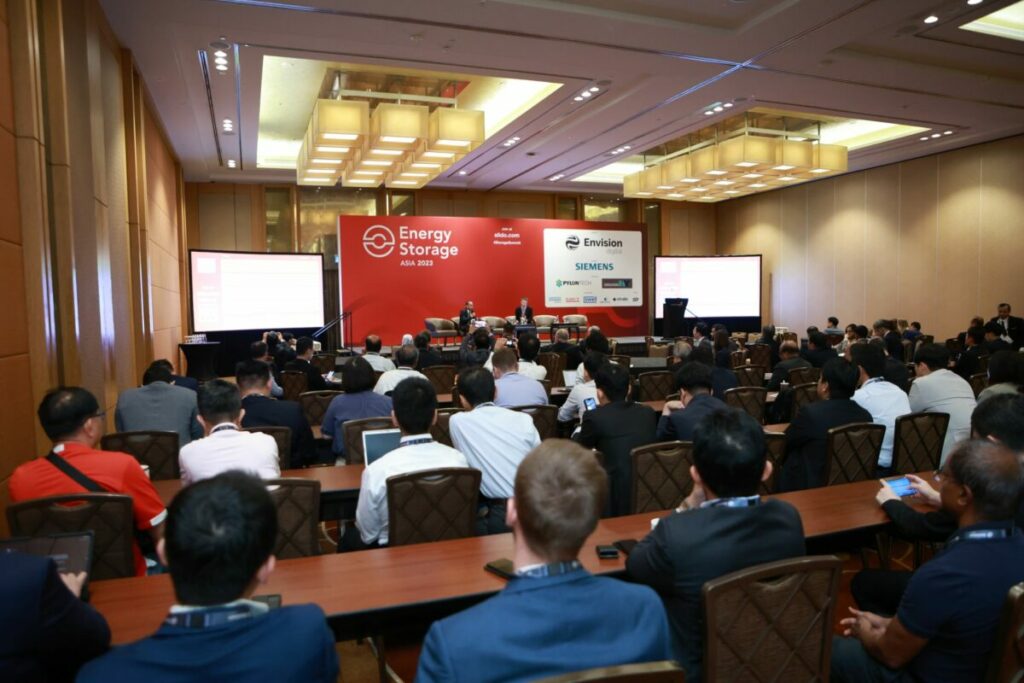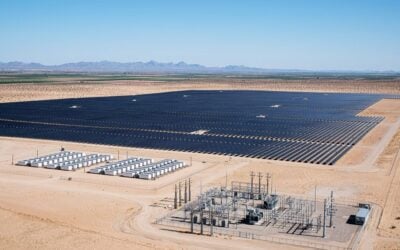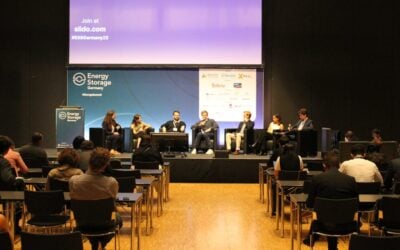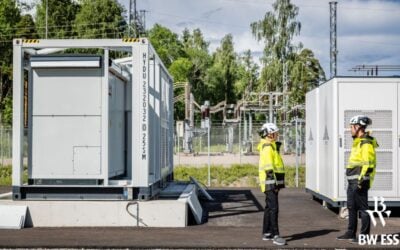
Reducing exposure to merchant risk is key to making banks comfortable with lending money for hybrid renewables-plus-storage projects.
That was a key takeaway from a discussion on co-located energy storage projects earlier this week at the Energy Storage Summit Asia 2023, hosted in Singapore by our publisher Solar Media. Panelists included representatives from the banking and developer community.
Enjoy 12 months of exclusive analysis
- Regular insight and analysis of the industry’s biggest developments
- In-depth interviews with the industry’s leading figures
- Annual digital subscription to the PV Tech Power journal
- Discounts on Solar Media’s portfolio of events, in-person and virtual
All agreed that while the fundamental need for stable and cleaner energy networks means the adoption of co-located or hybrid models is necessary for countries throughout Asia and the wider world, there is still a degree of uncertainty over the sort of business models that will work best.
The pairing of renewables and storage at a single site can encompass a few different types of project, said Joost van Acht, managing director at developer Ib vogt, from solar PV or wind generation that shares a grid connection with energy storage but operate as two separate assets, to hybrid resources models where the battery storage charges directly from the generation.
“In terms of what services are being provided, sometimes a battery component is an enabler for the solar plant, allowing more penetration or renewables [on the grid] but sometimes the battery has a different functionality,” such as playing into the arbitrage market, van Acht said.
That means there can be several different reasons for co-locating in the first place. Regular readers of Energy-Storage.news and our sister site PV Tech may be aware that on the northern Japanese island of Hokkaido, the region’s power utility and grid operator has for some time mandated that large-scale renewable energy facilities must be paired with storage to mitigate grid congestion and reduce the need for curtailment.
While that requirement was very recently phased out by utility Hokkaido Electric Power, it still applies to a project in the region that ib vogt is working on.
Co-locating can also help with a project’s economics and accelerate development timelines through sharing grid connection, van Acht said, reducing the cost and easing through the process of competing with other developers for grid connection in the first place.
Combination can offset merchant exposure
Meanwhile, revenue streams for standalone energy storage projects are still relatively unpredictable. The amount a developer or investor can make from them is often tied closely to how much volatility there is in the local network that the storage can help mitigate.
Conversely, renewable energy generation tends to earn revenues from long-term offtake contracts such as power purchase agreements (PPA). Putting the two types of resource together can offset the merchant exposure.
“It also helps us with the financing, ultimately, because we see that for standalone battery projects, the merchant exposure is a big challenge for project finance, and by combining the two [asset types], you’re basically providing a floor through the solar project that helps with the revenue a case for financing [the energy storage].”
Another use case for co-located projects which ib vogt is working on in the Asia-Pacific (APAC) region is at offgrid and remote mining and smelting operations in Indonesia. Those commercial and industrial (C&I) clients’ requirements will be for solar load shifting or even 24/7 renewable power supply.
Facing a very high cost of energy being generated from fossil fuels being taken to mining sites, the customers’ see solar PV as an economically viable alternative, and in those cases, developers like ib vogt can “basically provide the battery storage loaded up in the solar tariff”.
Lenders ‘look for certainty in cashflow’
Banking group MUFG’s deputy head of project finance Shilei Huang said that from a project finance lender perspective, it is better to have as much contracted revenue in the mix as possible. While those revenues may or may not turn out to be smaller than what can be earned by merchant opportunities, that certainty “helps to make sure projects are viable on a long-term basis”, Huang said.
“Lenders will be looking for certainty in cashflows. For standalone solar projects, in Asia, it’s very common to see fixed tariff long-term, fixed PPAs, often with government-owned entities and that provides a mitigation to volume and price risk of projects.
“However, if a battery storage component comes in, depending on the use of the battery storage, part of it could be for different kinds of services, then the revenue streams could be very different. There could be multiple revenue streams, and often there are contracted revenue streams as well,” Huang said.
“So in this case, it’s not that by combining this with the solar project, we are not able to finance, but if there are a portion of revenues that are contracted, then I think mitigators will need to be put in place in the financing structure to get them (lenders) this comfortable with pricing project risk.”
Blended financing structures could also help – debt finance can help mitigate, or rather share cashflow risks between different stakeholders. Kiran Jethwa, managing partner at asset management group Fumase said that banks he has spoken with typically want to take on less than 30% merchant risk.
“That is why some of the projects we are developing, we are allocating a certain amount of the capacity to corporate PPAs… it guarantees the cash flow to some extent, and mitigates that risk,” Jethwa said.
Ib vogt’s Joost van Acht added also that the sheer need for energy storage in a low carbon energy system means projects will be able to make good returns, but again, as it is unclear which merchant markets will represent the biggest opportunities a few years down the line, that’s something banks might shy away from.
“On the equity side… I think the challenge that we face is we need to convince the banks, because they are not comfortable taking a 10, 15-year risk of where the market might be going,” van Acht said.
Offering the example of a portfolio of co-located solar-plus-storage projects in the UK on which financial close was recently achieved, ib vogt was required by a bank to do a transaction with an energy trading house to provide a floor price under the battery revenue stream.
“That’s enabled us to bring in the financing, but it comes at a cost, so returns therefore are lower. But we can bring in more leverage. So it’s really finding the balance that’s going to make it (co-location) feasible.”






